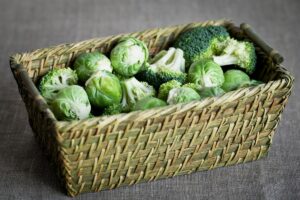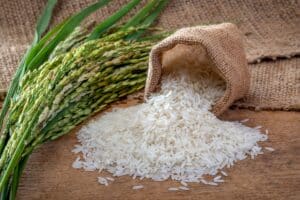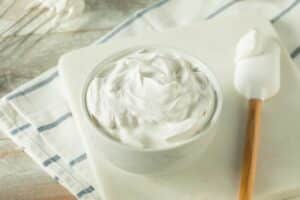Many recipes call for either Italian mascarpone or American cream cheese, but when you compare their prices, mascarpone appears to be more costly.
So what’s the difference if the price is higher?
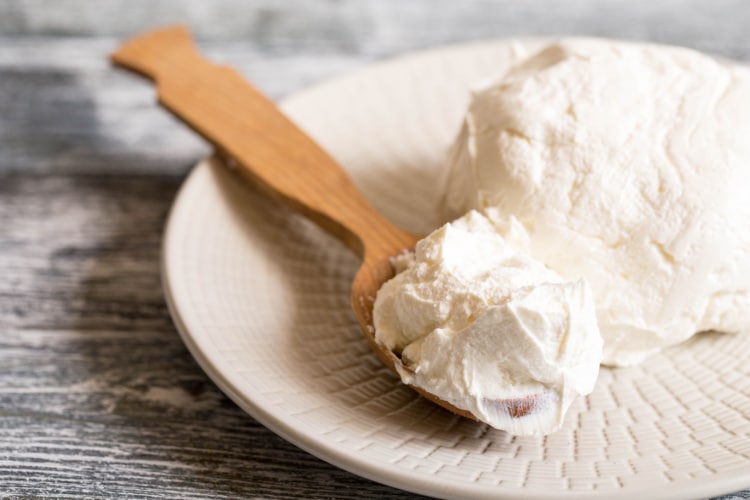
Mascarpone is an Italian cream cheese prepared from milk or cream and citric acid. It is the creamiest cheese produced in Italy, with a milk fat level of 60% to 75%.
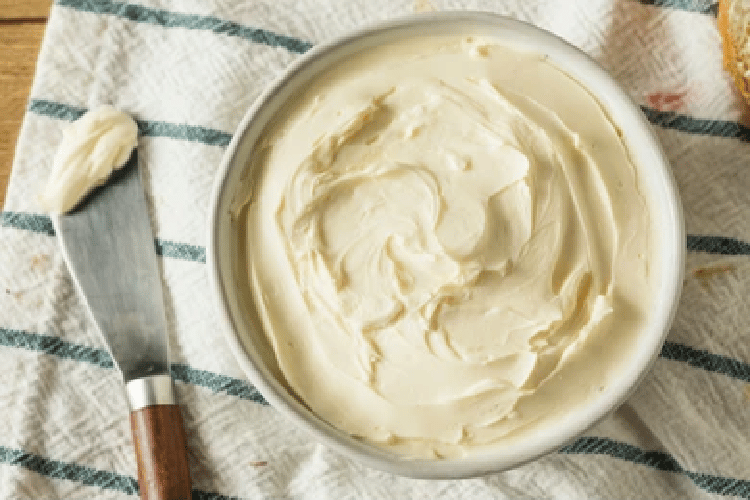
On the other hand, American cream cheese is made of cream and milk, along with salt, stabilizers, and cultures. It has a minimum milk fat percentage of 33%.
So which flavor is superior? Are they equally spreadable and creamy? How about their dietary intake? The battle of two kinds of cheese begins here.
Difference Between Mascarpone and Cream Cheese
As you’ve likely noticed, the primary distinction between mascarpone and cream cheese is their fat level — 60 to 75% milk fat in mascarpone vs. 33% milk fat in American cream cheese.
Although they are both white, soft kinds of cheese with a mild flavor, they also differ significantly from one another in terms of their origin, ingredients, flavor profile, and texture. Let’s discuss each difference separately.
Origin
It is thought that mascarpone first appeared in the Lombardy area of Italy, perhaps in the late 1500s or early 1600s.
Some believe that the word “mascarpone” derives from the Spanish phrase “mas que bueno,” which means “better than good” and dates back to the time when the Spanish governed Italy.
Another theory is that the word came from the local dialect term for ricotta cheese, known as “mascarpia,” because ricotta and mascarpone are produced using very similar methods.
On the other hand, William A. Lawrence, a dairyman from upstate New York, created cream cheese sometime in about 1873.
He created it by adding cream to the cheese-making recipe in an effort to replicate Neufchâtel cheese.
Recipe
The sole components of mascarpone are heavy cream and citric or tartaric acid. The procedure for making mascarpone includes heating up the cream and adding the acid to solidify and thicken its texture. After that, the surplus liquid is drained via cheesecloth.
The end result is a readily spreadable and extremely smooth cream cheese with a fat level between 60% and 75%.
Similarly, fresh pasteurized cream or a milk-and-cream mixture is the base for cream cheese production. Lactic acid bacteria are then added to reduce the pH, causing curds to develop.
When the whey is removed, and the curds are cooked, stabilizers are added to give the cream cheese some structure, which is something that mascarpone lacks. The end result is rich and smooth cream cheese with a lower fat content of at least 33%.
Flavor
Mascarpone has a somewhat acidic and sweet flavor since it is produced using tartaric acid, occasionally citric acid, or both.
Cream cheese has a moderately tangy flavor since it is created with lactic acid. Additionally, cream cheese has a noticeably more salty flavor than mascarpone.
Mascarpone has a greater fat content, giving it a deeper, velvetier taste. Due to the cream cheese’s decreased fat level, its overall flavor is much less pronounced.
Because of this, cream cheese has a gentler and tangier flavor than mascarpone, which is richer with sweet and acidic undertones.
Texture
Cream cheese also has a thicker texture than mascarpone. It’s widely enjoyed in mashed potatoes, salads, as a dip, and in side dishes with sushi.
Cream cheese is also the go-to spread to put on crackers and toast. The most well-known recipe, however, that’s very characteristic of cream cheese’s properties is none other than the well-known cheesecake.
On the other hand, mascarpone is known for being considerably softer than cream cheese.
There’s no better cheese that can spread as heavenly good in pasta recipes as mascarpone. The same goes for pies or sweet tarts. Tiramisu, an Italian dessert, is perhaps the most well-known dish that benefits from its velvety texture.
Price
Typically, cream cheese costs between $0.99 and $2.50. On the other hand, mascarpone may cost up to $7.
Mascarpone costs at least twice as much as cream cheese since it utilizes heavy cream and has a greater fat content.
Mascarpone vs. Cream Cheese Comparison Table
| Category | Mascarpone | Cream Cheese |
| Origin | Italy | USA |
| Ingredients | Made with heavy cream, citric, or acetic acid | Made with milk, cream, lactic acid, and stabilizers |
| Fat Content | From 60% to 75% | Around 33% |
| Flavor | Richer flavor, slightly sweet and acidic | Milder and tangier flavor |
| Texture | Lighter and more velvety | Denser and thicker |
| Use | Included in tiramisu, pasta, and pie recipes | Mainly used as a spread, frosting, or dip |
| Price | More expensive | Less expensive |
Nutritional Content Breakdown: Which One Is Healthier?
By comparing the amount of fat in the two — mascarpone having 24% more than cream cheese — we can determine which cheese is the better choice health-wise.
Since it’s fattier, mascarpone also contains 23% more calories than cream cheese, so mascarpone may not be a very good option if you’re trying to lose weight.
In terms of protein content, cream cheese is 72% richer than mascarpone. However, cream cheese has a 55% higher carbohydrate content than mascarpone.
Mascarpone has 47% more calcium than cream cheese, which is the biggest nutritional advantage it has over cream cheese in terms of vitamins and minerals. On top, mascarpone has nearly five times less salt than cream cheese.
Mascarpone vs. Cream Cheese: Nutritional Profile
| Category (100g) | Mascarpone | Cream Cheese |
| Calories | 429 | 350 |
| Carbs | 3.57 | 5.52g |
| Fat | 42.86 g | 34.44 g |
| Protein | 3.57g | 6.15g |
| Calcium | 143 mg | 97 mg |
| Sodium | 54 mg | 314 mg |
Can I Substitute Mascarpone for Cream Cheese & Vice Versa?
Yes, you can substitute cream cheese for mascarpone or vice versa.
When replacing cream cheese with mascarpone, take the cream cheese out of the refrigerator and let it reach room temperature. Afterward, use a fork to mix and mash the cream cheese until it has a runny consistency similar to mascarpone.
Next, combine it with sour cream or heavy whipping cream. Use up to 1/4 cup of heavy whipping cream for every 8 oz. of cream cheese. As for sour cream, use equal amounts of sour cream and cream cheese.
If you want to make a cheesecake with mascarpone rather than cream cheese, for instance, squeeze a pinch of fresh lemon juice to give the cheesecake its distinctive acidity.
Popular Recipes That Call for Mascarpone & Cream Cheese
After learning everything there is to know about these two delicious types of cheese, it’s time to look for recipe ideas. Here are the most popular dishes that use either mascarpone or cream cheese.
Mini Cheesecakes

For all of you home chefs who don’t have much time for complicated preparations, these little cheesecakes offer a pleasant treat. They have the same flavor and texture as traditional cheesecake. Additionally, you are allowed to use your imagination and add whatever topping you choose!
Cheese Danish

Even the best cheese Danish pastry from the grocery store can never outperform the one you’ve made yourself. The good news is that you don’t need to be a skilled cook to prepare one, as you need only a few staple ingredients.
The end result is a buttery, flaky crust and a creamy inside. It’s ideal for special occasions like Christmas but is simple enough for a casual weekend morning.
Mascarpone Tomato Soup
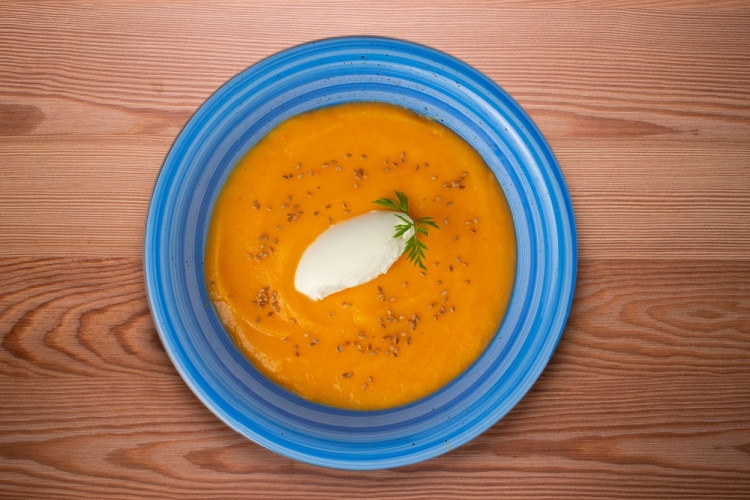
Once the colder months begin, comfort food — specifically soup — should be on your mind. This mascarpone and tomato soup is the warm embrace we all look for. It is calming, tasty, and just evokes memories of childhood. Here are several side dish options!
Tiramisu Berry Trifle Cups

Fresh berries are the best way to evoke summertime feelings. The next time you have either fresh or frozen berries, make these tiramisu berry trifle cups with mascarpone! The recipe calls for berries, mascarpone, and ladyfingers dipped in strawberry puree. Serve them in decorative glasses and enjoy!
Conclusion
Now that you understand the distinction between mascarpone and cream cheese, you can wow your friends with some distinct mascarpone or cream cheese delicacies!
Just remember, if you aim for a richer taste, go with mascarpone. It’s sweeter and more acidic, yet not as tangy as cream cheese.
If you’re on a diet and want to keep a moderate calorie intake, opt for cream cheese. Keep in mind that mascarpone is quite high in calcium!
That’s all. Have fun cooking!


